Military Pioneers: Women’s Auxiliaries and World War II
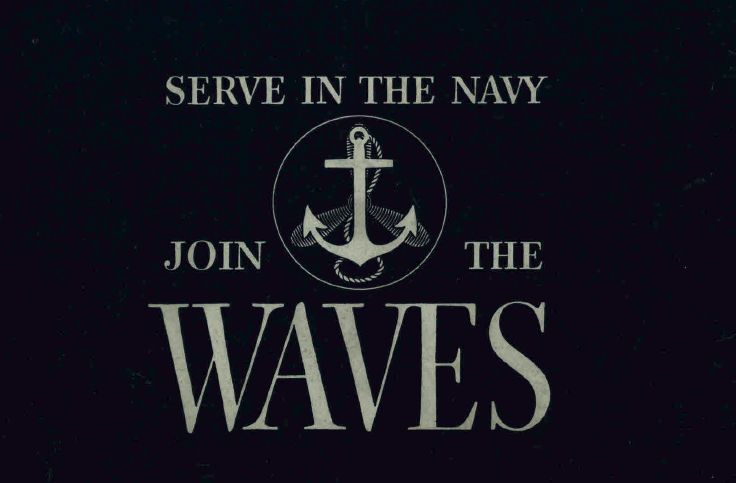
Seventy-five years ago this month, Congress passed legislation establishing the Women’s Army Auxiliary Corps (WAAC). The WAAC was one of several military and civilian women’s auxiliaries that made an important contribution to the war and helped lay the groundwork for future women in the military.
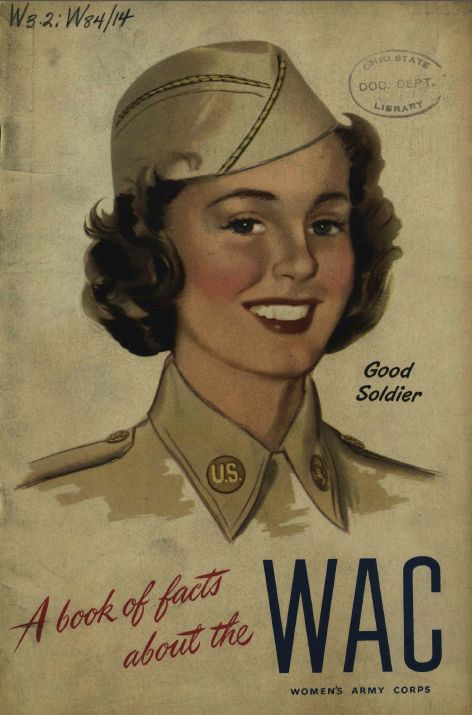
Before World War II, women had served limited roles in U.S. military branches: the Army Nurse Corps and Navy Nurse Corps had been established in the early 1900s, and during World War I the Army Signal Corps employed civilian women as telephone operators known as “Hello Girls.” Imprecise wording in the Naval Act of 1916 allowed women to volunteer for the Navy and Marine reserves, where just over 12,000 “Yeomanettes” and “Marinettes” performed predominantly clerical tasks.
In the spring of 1941, with war looming and manpower short, U.S. Representative Edith Nourse Rogers saw both a need and an opportunity for women to participate in the upcoming war effort on a larger scale. After Rogers threatened to introduce her own legislation, the War Department drafted a bill establishing a volunteer women’s corps affiliated with, but not part of, the U.S. Army. Rogers sponsored the bill; after one year and ninety-eight columns of debate in the Congressional Record, it was finally approved in May 1942. (Rogers later sponsored the 1944 G.I. Bill of Rights and continued to champion veterans throughout her 35-year congressional career.)
The objective of the WAAC was to “free a man to fight” by placing women in noncombatant jobs, which allowed the men who had previously held those positions to be reassigned to combat duty. Despite the fact that the WAAC was an auxiliary to rather than part of the Army—and its members therefore received lower pay—roughly 35,000 women applied for the first 1,000 positions. In the summer of 1942, the first group of 440 officer candidates and 330 enlisted began training at Fort Des Moines, Iowa.
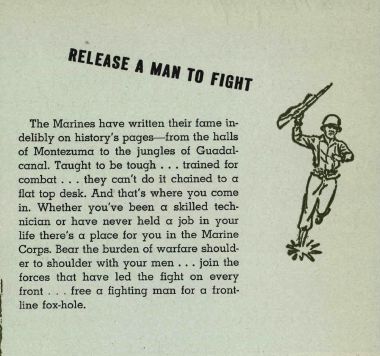
The remaining military branches followed suit. In July 1942, legislation introduced by Rogers created the Women’s Reserve of the U.S. Naval Reserve (nicknamed WAVES, for Women Accepted for Voluntary Emergency Service). Unlike WAACs, the WAVES were part of the Navy and therefore received the same rank and basic pay as regular Navy personnel, as did the Coast Guard SPARs (based on the Coast Guard motto Semper Paratus, or “always ready”) and the Marine Corps Women Reservists. By spring of 1943, training had begun for all three branches. The Coast Guard Academy became the first military academy to admit women when SPAR officer candidates began training there, and both officer and enlisted Marine Women Reservists trained at Camp Lejeune, North Carolina, starting in the summer of 1943.
By this time, 60,000 women had volunteered for the WAAC. But better pay in other branches provided stiff competition, and auxiliary status was inefficient. In July 1943, a new bill replaced the WAAC with the Women’s Army Corps (WAC), giving women military status with the same rank, pay, and benefits as their male counterparts. More than 75 percent of the WAAC chose to enlist. Also in 1943, WACs began deploying overseas. More than 8,300 served in Europe; others served in Asia, Africa, and the Pacific.
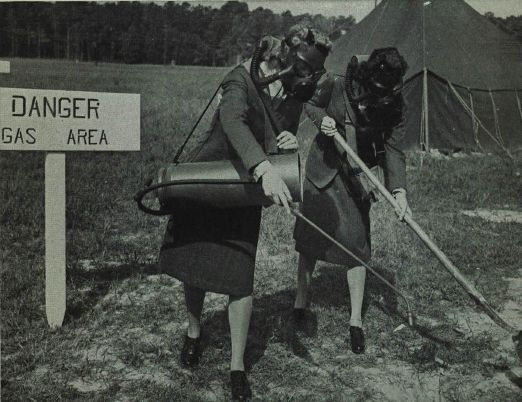
Early in the war, women generally served in traditional “female” clerical roles, working as typists, file clerks, and switchboard operators. As the war progressed, however, their roles expanded to more diverse positions including cryptographer, driver, mechanic, and radio operator. In the Army and Navy Air Corps, women worked as control tower operators, bombsight maintenance specialists, and flight simulator instructors. More than 400 WACs served on the Manhattan Project in roles including photographer, electronics technician, metallurgist, and scientist.
By the end of the war, nearly 250,000 women had served in the four women’s auxiliaries. Afterward, most returned to their civilian lives. However, in 1946 the Army asked Congress for authority to make the WAC a permanent part of the regular Army, and the head of the WAVES began gathering support to make women part of the regular Navy. When the Senate Armed Services Committee met to consider legislation in 1947, Fleet Admiral Chester W. Nimitz testified in support of the bill and the necessity of retaining women in the military. After two years of debate and delay, the Women’s Armed Services Integration Act was finally signed into law on June 12, 1948, establishing permanent women’s corps in the Army, Navy, Marines, and the newly-formed Air Force.
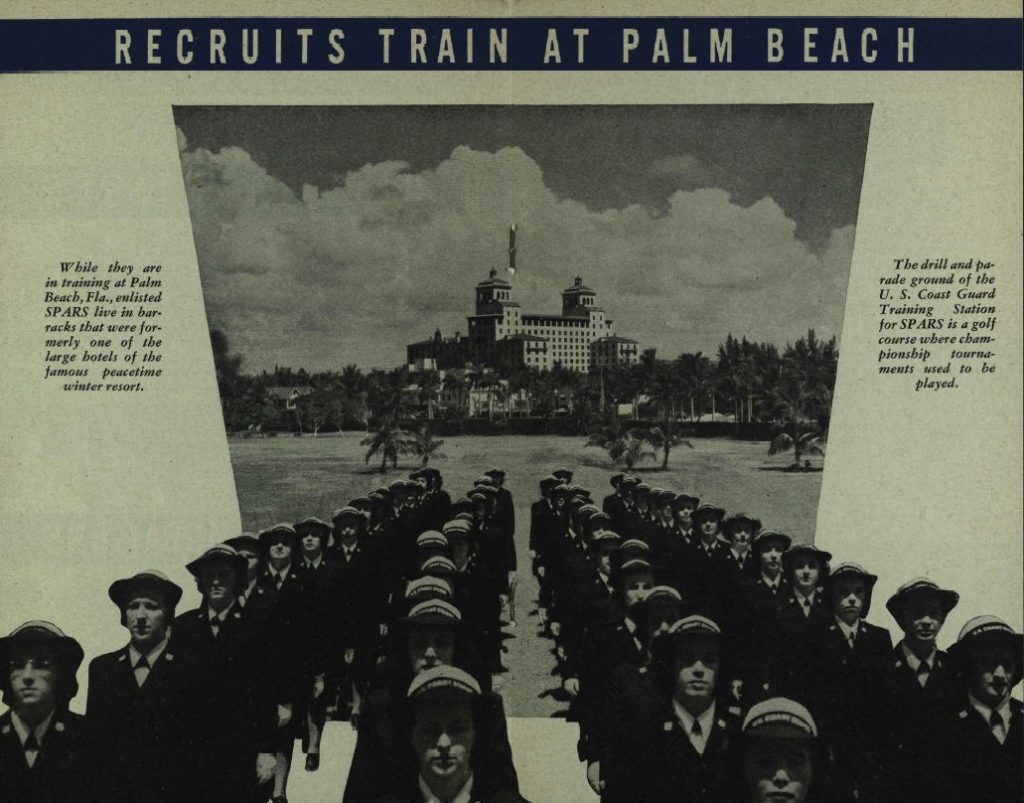
The single exception was SPAR, which was completely disbanded after the war. The Coast Guard had originated as a customs enforcement service, and in peacetime was under the control of the Treasury Department. When it returned there from the War Department after WWII, SPAR was lost in the process. It would be another 20 years until women could again join the Coast Guard.
The WAC remained part of the Army until 1978, when it was abolished and women were integrated into the regular Army. The role of the WACs and other women’s reserves in laying the groundwork for this gradual change was perhaps best summed up by General Thomas Holcomb, the Marine Corps commandant during WWII, who was against recruiting women and had been the last to accept them into the reserves. He succinctly stated: “Like most Marines, when the matter first came up, I didn’t believe women could serve any useful purpose in the Marine Corps… Since then, I’ve changed my mind.”
Thank you to Stephanie Michaels, Research and Catalog Services Librarian at theState Library of Ohio, for this week’s post!



Leave a Reply
You must be logged in to post a comment.